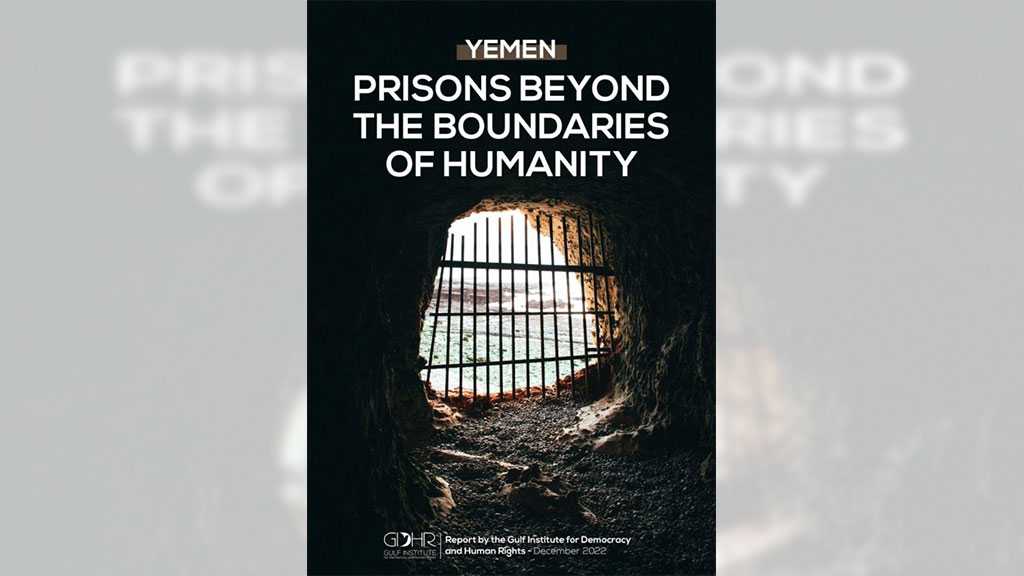Yemen: Prisons Beyond the Boundaries of Humanity

By GIDHR
The Gulf Institute for Democracy and Human Rights published a series of reports in which it has been monitoring the human rights situation in Yemen since the start of the Saudi-led war in March 2015.
In one report, the organization provided verified information on a particular category of violations caused by nearly eight years of war in Yemen, which has been led by Saudi Arabia and the United Arab Emirates.
This war caused thousands of civilian casualties, created a catastrophic humanitarian situation, suppressed public rights and freedoms, and deprived Yemenis of the most basic life necessities.
Since the start of military operations in Yemen, the Saudi and Emirati forces have been deployed to many Yemeni cities, islands, and regions. These deployments resemble a form of direct occupation through which the occupiers control public affairs, exploit resources and wealth, and have actual control over the management of all of the cities’ and areas’ capabilities.
These cities and areas had fallen under the full control of Saudi and Emirati military leaders and political figures who extended their influence using military and security formations. These were deployed throughout the cities and regions of southern Yemen, several strategic islands, and the city of Marib in the north.
Throughout the war, the Saudi-Emirati coalition took control of the city of Aden and established dozens of secret prisons. They also took control of Hadhramaut and turned Al-Rayyan airport and the port of Dabh into secret prisons. In Shabwa, the Emirati forces turned the Balhaf oil facility into a secret prison.
In Al-Mahrah, Saudi forces disrupted operations at the Al-Ghaydah airport and turned it into a detention center for those opposed to its presence. The forces from the two countries also established detention centers and secret prisons in Abyan, Marib, Al-Mokha, and Socotra Island.
In addition, many residents fell victim to arbitrary arrest campaigns. Reports and investigations carried out by international organizations and human rights activists surfaced. This resulted in the discovery of dozens of secret prisons and illegal detention centers established by Saudi and Emirati forces. These facilities were run by Saudis and Emiratis inside Yemen.
The detainees in these prisons were subjected to the worst forms of humiliation, and the worst methods of torture imaginable.
These detainees are usually placed in prisons administered by local authorities for a short time and then transferred to secret prisons and detention centers inside Yemeni cities. Others are transferred outside Yemen to prisons in Abha, Saudi Arabia and even prisons belonging to the UAE in Eritrea and Djibouti.
Hundreds of travelers were subjected to various arbitrary measures, from the moment they were taken to the detention centers in areas controlled by Saudi Arabia and the Emirates up until the deportation of a number of them to prisons and detention centers located on the territory of Saudi Arabia.
GIDHR investigated a number of violations that were cited in reports compiled by local and international organizations and committed by Saudi Arabia and the UAE in their illegal detention facilities and prisons in southern Yemen.
GIDHR reviewed information and testimonies provided by Yemeni detainees in Saudi and Emirati-run prisons during its investigation, all of which confirmed that opposing the Saudi and Emirati presence on Yemeni territory as well as rejecting and opposing the policies of the two countries was the only charge leveled against those who were subjected to arbitrary detention, enforced disappearance, and torture.
According to information gathered and verified by GIDHR, detainees in Saudi and UAE prisons face the most severe forms of oppression, humiliating and degrading treatment, and torture that no human mind can imagine.
GIDHR’s investigations identified the following torture methods:
- Kicking and slapping
- Deprivation of water and food for long periods
- Beating with whips, sticks, and electric wires
- Electrocution
- Burning with cigarettes stubs
- Hanging upside down
- Shackling and hanging from the hands and feet for hours
- Hitting the extremities with hammers
- Sleep deprivation
- Denying access to toilets
- Use of insulting, "obscene and sexual" words
- Simulated drowning in water basins
- Forced to drink urine
- Forced nudity
- Prohibition from practicing rituals
- Prostrating to the Saudi and Emirati flags
- Sexual assault and rape
- Sodomy
- Threats of arrest and sexual assault of relatives
Comments




